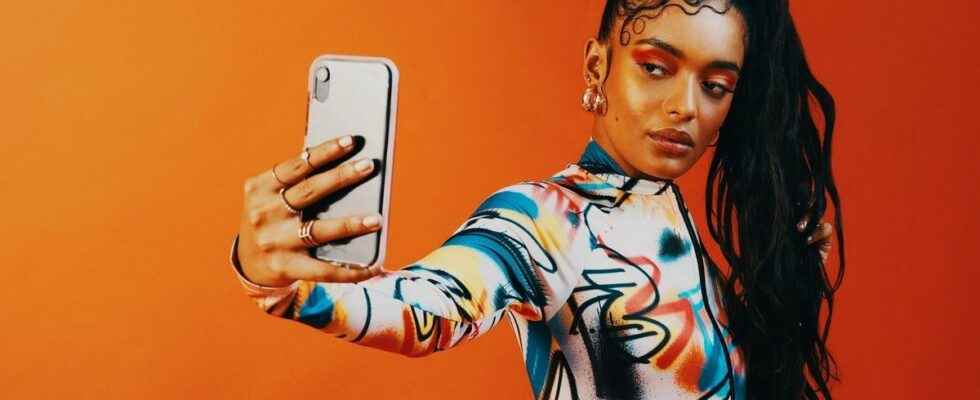Published on
Updated
Reading 3 mins.
They have made and broken fashion for decades, until in recent months they have become ubiquitous, if not invasive. Fashion trends are everywhere, to the point of no longer being anywhere, except mentioned in the form of a hashtag lost in the maze of the virtual world. What to wonder about their relevance at the dawn of a new year which should devote self-expression and reasoned fashion.
Tendency. A word that we use today for everything and anything, accompanying micro-phenomena straight out of social networks, Netflix series, and other virtual universes. It is no longer a question of following the seasonal inspirations of the greatest fashion designers and the most seasoned influencers, but of indulging in impulses that gradually kill these trends. Something that should be reinforced in the coming months by consumers’ desire to turn to more committed and reasoned fashion, and to assert their personality with a unique style, far from the trends advocated by TikTok.
Thousands of micro-trends
Before the era of social networks and streaming, and more specifically TikTok and Netflix, trends were already numerous but seemed to be under control. Taking their source on the catwalks of New York, London, Milan, or Paris, they emerged, then exploded, under the impetus of public figures, on red carpets or in the street, to end their frantic race in our closets, and this for – at least – a season. A cycle criticized by defenders of a more reasoned fashion, but which allowed to set the tone, often accompanying major societal changes.
That was before. Now trends, or should we say micro-trends, are springing up like mushrooms, one, two or even three times a week. A crazy rhythm that makes them all the more ephemeral, and all the less impactful. Barbiecore, balletcore, cottagecore, goblincore, kidcore, normcore, regencycore, or ‘en-core’ gorpcore and fetishcore, among others, are among the ‘trends’ that punctuated the year 2022 and generated billions of views on TikTok. Enough to make users in search of new products click, determined to be pioneers in the field.
And that’s without taking into account the influence of television series on fashion, from the romantic comedy “Emily in Paris” to the historical dramas “The Crown” and “The Bridgerton Chronicle”, which are also at the origin of dozens of fashion inspirations, from corsets to berets, including long gloves, wigs, and other anachronistic accessories that ordinary mortals will probably never wear. Trends follow each other without ever resembling each other – or almost – at a frantic pace, to the point of meaning nothing more, if not a pronounced taste for the ephemeral and diverse and varied styles.
‘Weird girl’, the anti-trend trend
The accumulation of trends is such that a new trend – and this is the height – was born to point the finger at the phenomenon. It is to understand nothing more. “weird girl“, also born on social networks, with no less than 140 million views to its credit on TikTok, takes the opposite view of this multiplication of micro-trends by inviting everyone to adopt a unique and singular style. The objective? following trends, not embracing established codes, and giving free rein to your imagination, your creativity, without worrying about what people will say.
According to the global fashion search engine Lyst, the “Weird girl” style, which can be translated as “Weird girl”, would be the fashion aesthetic of the year on TikTok. Clearly blurring the tracks, and making it possible to approach fashion differently, this umpteenth trend tends to show that users of social networks themselves seem tired of this succession – without end – of fashion trends of all kinds.
Good in your body, good in your head!
Self-expression and the climate emergency
Let it be said, trends – those that emerge from fashion shows – are not born by chance, and are the fruit of in-depth studies, most often wanting to be the reflections of major societal changes. Hence the fact that they take their source on not one, but several catwalks, and this simultaneously in the four fashion capitals. Indispensable for the entire industry, from luxury to ready-to-wear brands, they set the tone of the season, even if some critics set the pace far too frantically. Something that could harm them in the near future, due to the new environmental challenges facing players in the sector.
Who says slow fashion, says slower manufacturing, between sustainability and eco-responsibility… Terms in total opposition to the very principle of trends. We can therefore expect in the coming months, in addition to this weariness of assimilating too many trends, to see their impact diminish, with a return to a more basic wardrobe. A phenomenon reinforced by the need of the public to display a more singular style, in connection with the personality, more than the tendencies of the moment, underlining not the expression of a predefined inspiration, but of oneself. Two things that could contribute to the end of fashion trends, or, perhaps, to a return to so-called classic, seasonal trends only. And even, to the emergence of these micro-trends in another world, the metaverse, where users could express all their inspirations and desires as they see fit.
